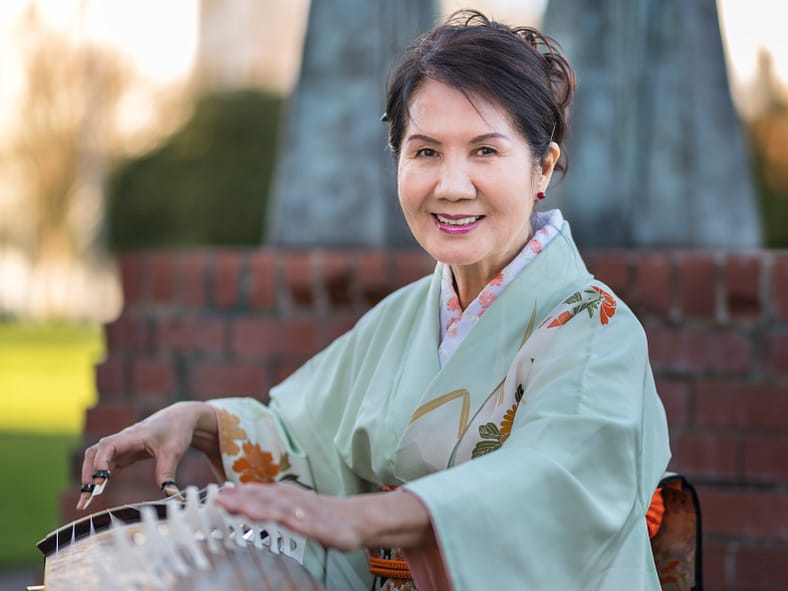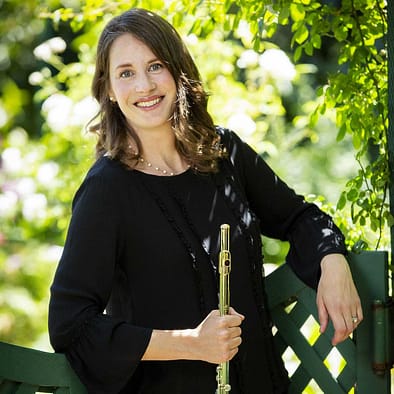
Enjoy a free koto and flute performance by Masumi Timson and Dr. Emily Stanek at 1:15pm at the Cathy Rudd Cultural Corner in the Jordan Schnitzer Japanese Arts Learning Center.
Artist Bio: Masumi Timson
Masumi Timson is a performer and instructor of the Koto and Shamisen – traditional musical instruments of Japan. She holds a Master’s Degree in Music with a specialization in the Koto and Shamisen from Seiha Conservatory of Japanese Traditional Music, one of the most prestigious Koto schools in Japan. Masumi plays both classical and contemporary Koto music, and also sings Japanese classical songs with Koto and Shamisen accompaniment. She also enjoys collaborating with various western musical instruments to explore a wide range of musical genres, from jazz and tango, to western classical compositions by Bach and Mozart. Masumi has participated in many recordings of Pink Martini, and has performed with the band at various venues around the world, including Carnegie Hall, the Hollywood Bowl, and the Grand Rex Theatre in Paris. She also directs the koto club at Willamette University and teaches Japanese language and culture at Chemeketa Community College. We’re truly fortunate to have her as a cultural partner.
Artist Bio: Dr. Emily Stanek

Dr. Emily Stanek is known for her rich warm tone and her expressive and exciting performances. She is the artist associate in flute at Willamette University as well as the flute instructor at Corban University and Chemeketa Community College. Dr. Stanek served on the faculties as an adjunct flute instructor at Anderson University and Wabash College in Indiana, and George Fox University in Oregon. Her teaching extends to invitations to lead master classes and give guest recitals at Portland State University, California State University, the University of Southern Maine, University of Oregon, Shenandoah Conservatory, Kent State University, and Ball State University.
ABOUT THE KOTO
The standard Koto is a thirteen-string plucked zither. It was introduced to Japan from China through the Korean Peninsula in the 7th century. The instrument has been part of the Gagaku court ensemble for over one thousand years, gradually becoming popular among the merchant classes of the Edo period (1600-1868). An important member of the traditional Sankyoku ensemble, along with the three-string Shamisen and Shakuhachi (bamboo flute), the Koto developed further in a solo capacity, eventually gaining its place as one of Japan’s most prominent musical instruments. Today a varied repertoire along with a wide range of playing techniques provides a wonderful palette of sound textures, making the Koto appealing to audiences the world over.
